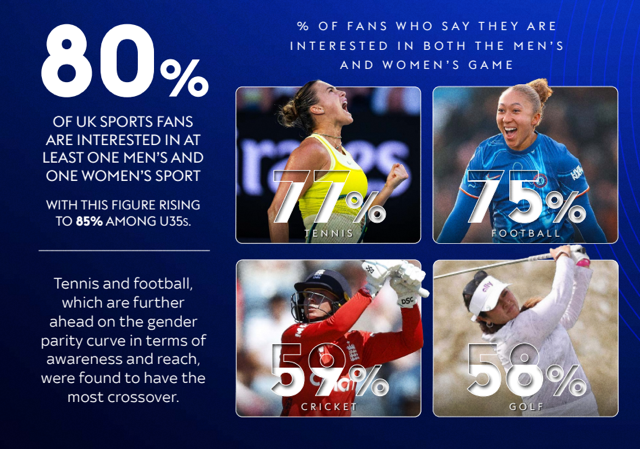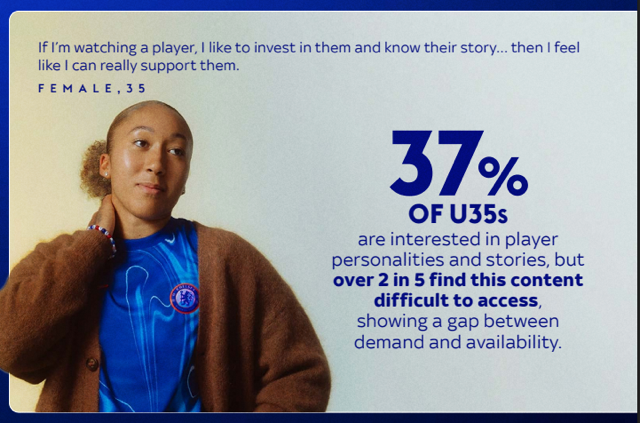Sky Media: Brands shouldn’t miss their chance to connect with women’s sport fandom

Opinion
Women’s sport should be seen as firmly part of the mainstream now, and brands should be aware of the opportunity to connect with fans around player stories.
When it comes to live viewing, sport isn’t just surviving, it’s thriving. One of the key components of that growth is the success of women’s sport. In 2024, women watched more than 21 million hours of women’s sport across Sky Sports and TNT Sports, up 9% year-on-year.
Obviously, it’s not just women watching it, as I’ll go into. But what’s interesting is the relationship women have with sport, and how a better understanding of that can help brands connect more effectively with a fast-growing, younger, and more affluent audience.
One of the clearest signals of change, shown in our recent Sky Sports research, is that fandom is fundamentally shifting, particularly for younger audiences. The established idea of sports fans being loyal to just one team, one league, or one gender is being replaced by something more fluid and inclusive. New formats like The Hundred and the rise of women’s football are already showing what’s possible when strong live experiences meet accessible, engaging storytelling.
These formats are attracting fans who might never have seen themselves as “traditional” sports viewers. But they’re engaged, enthusiastic, and growing.
In 2024, 30% of the Sky Sports audience were women. And I’m seeing this growth everywhere.
Recently, heading into town for an evening out, I met four women on their way home from an Arsenal Women’s match, buzzing about the prospect of heading to Portugal for the Women’s Champions League final. One told me she travels from Wales most weeks to watch the Arsenal Ladies. That’s the level of passion and commitment we’re seeing.
Women’s sport is not a niche
Digging into the Sky Sports research, we’re seeing 80% of UK sports fans now follow at least one men’s and one women’s sport. Among under-35s, that climbs to 85%.

Following both men’s and women’s sport isn’t niche — it’s mainstream. And crucially, it’s not driven by obligation or agenda. It’s about love of the game.
Fans are following quality, skill and storylines, regardless of gender. The brands already connecting with these audiences are reaping the rewards. But in women’s sport, there’s still room for many more to get involved.
In my opening line, I mentioned live TV, because there is a belief, with the rise of on-demand, that linear has lost its power.
But in sport, that is simply not the case, with 99% of sports content watched in real-time. This year alone, TNT Sports has seen viewing up 7% year-on-year in Q1, and Sky Sports recorded its biggest-ever single day of viewing on Masters Sunday, with 7.5 million viewers on linear channels.
Female fans want to connect with player stories
People are watching more great sport played by men and women. But how and what they engage with is shifting, and brands that understand and tap into that will gain a clear advantage.
When it comes to women’s sport, female fans want more – they want to know the personality, the athlete, the backstory, the individual. Here’s one: did you know Leah Williamson is an accountant and plays the piano?
Yet while interest in player stories is high, only 37% of fans of women’s sport say it’s easy to find content that showcases player skills and personalities. The demand is clear, but supply is lagging behind. There’s both a need and an opportunity that brands can tap into.

That’s where broadcasters and athletes have a huge role to play. 57% of UK adults say athletes are the main reason they follow sport, and 51% say broadcasters shape their fandom. In other words, it’s not just the match. It’s the storytelling that surrounds it that builds long-term connection.
That’s exactly why we’re using our cross-platform viewing insights, commissioning new research, and partnering with the likes of Hearst to help brands create deeper engagement beyond the game for greater impact and better outcomes.
For brands, the takeaways are clear:
• Live viewing in sport is going from strength to strength.
• New, broader, and valuable audiences are coming to sport, especially women.
• Today’s fans want more than the game — they want the backstory and meaning, and this is especially true for female fans.
And the rewards are great — if your brand can engage with this growing audience through the right partnerships, platforms, and voices, you’re onto a winner. We don’t need to justify why we’re showing up in women’s sport anymore.
The focus now is on how. And those getting it right aren’t following the moment, they’re defining it.
 Karin Seymour is director of client & marketing at Sky Media.
Karin Seymour is director of client & marketing at Sky Media.




